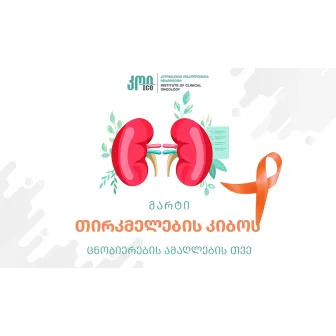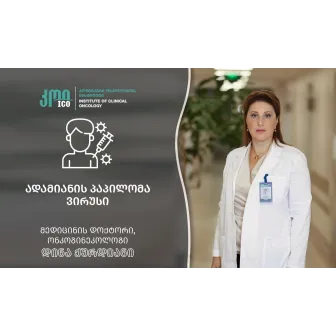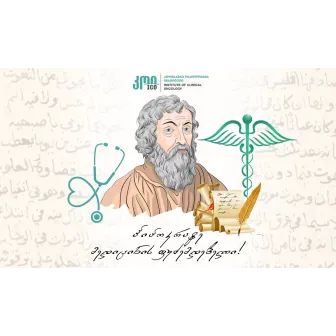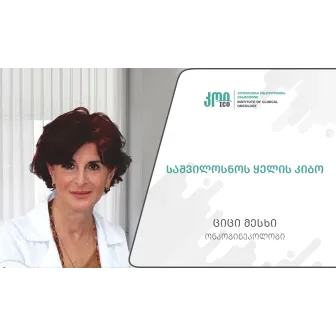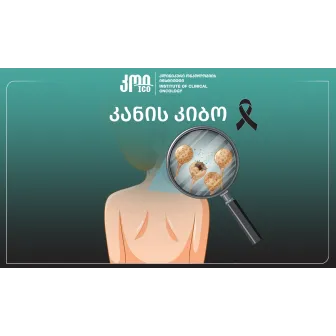Breast pathologies are widespread today; therefore, the timely detection of precancerous breast diseases is even more important, as this will prevent serious advanced disease and related complications. Eka Baramadze, a mammologist at the Institute of Clinical Oncology, talks to us about precancerous breast diseases.
- Which disease can be considered as a breast pre-cancerous condition?
All breast diseases that lead to cancer development can be considered as a pre-cancerous condition of the breast. This includes any form of mastopathy in which epithelial proliferation occurs, since it is precisely the areas of proliferation that undergo malignancy, as well as benign tumors of the breast: adenoma, fibroadenoma, phyllodes tumor, intraductal papilloma, cyst, lipoma.
- What causes precancerous conditions?
The mammary gland is a hormone-dependent organ, therefore, its pathology is caused by all factors that disrupt the body's hormonal and humoral homeostasis (balance). Such factors are: late onset of sexual activity, frequent abortion, use of oral contraceptives, infertility, diseases of the genital organs, thyroid diseases, short-term breastfeeding, liver diseases, frequent stress, radiation exposure, obesity, and breast trauma.
- What can you tell us about mastodynia, cysts, new growths, and hormonal disorders?
All of the above-listed conditions can be considered precancerous, but it's not that simple. For example, breast cancer is 3-5 times more likely to develop in the presence of mastopathy, but this does not mean that all forms of mastopathy should be considered precancerous. In mastopathy, the development of cancer is preceded by a number of changes in the glandular lobules of the mammary gland. There are two forms of mastopathy: diffusive and nodular. The nodular form of mastopathy, with epithelial proliferation and dysplasia, significantly increases the risk of developing a malignant tumor. As for benign breast tumors, they are mainly found at a young age. They are also considered precancerous because they can develop into various forms of malignant tumors. Rarely, but still adenomas and fibroadenomas undergo malignancy. Phyllodes (leaf-shaped) fibroadenomas are quite transformative, but lipomas very rarely transform into liposarcomas.
- What are the clinical signs of each of them, and what should a woman pay attention to?
In the case of mastopathy, breast pain (mastodynia) occurs, which intensifies in the premenstrual period. The pain can be of a different nature and intensity, gradually becoming intense and constant. It often spreads to the shoulder, clavicle. The breast gets swollen, hardened. After the onset of menstruation, these sensations disappear. Discharge from the nipple may appear - transparent, yellowish, or greenish (not bloody). Such changes are observed in diffuse mastopathy, which occurs mainly in young women. The nodular form of mastopathy is mainly recorded from the age of 30.
In nodular mastopathy, a hardened area with sharp borders can be felt, which can be single or multiple in one or both breasts. While lying, the hardened areas lose their shape.
Breast adenoma is a benign tumor. It develops as a result of the proliferation of glandular elements. It is well-circumscribed, mobile, and has soft-elastic consistency. It is not connected to the skin and adjacent tissues. Regional lymph nodes are not enlarged. Sometimes a cyst is formed inside the tumor. In such a case, the term "cystadenoma" is used. This is common in young women.
Intraductal papilloma is a benign tumor that develops from the breast ducts. It is also known as Mintz's disease. Intraductal papilloma is located behind and near the nipple or areola; it can be single or multiple. It can get malignant. It is almost impossible to detect it by palpation. It is mainly manifested by bloody or serous-bloody discharge from the nipple, which is noticeable if the nipple is pressed.
Fibroadenoma occurs mainly in women under the age of 30. On palpation, it is felt as a smooth, sharply demarcated, round or oval formation that moves freely in the breast tissue when pressed. It is not connected to the adjacent tissues and skin. Regional lymph nodes are not enlarged.
Separate consideration is required for Phyllodes (leaf-shaped) fibroadenoma, which grows rapidly and reaches a large size. It has a dense consistency, an uneven surface, is not connected with adjacent tissues, and has a high degree of malignancy.
Breast cysts mainly develop against the background of nodular or diffuse mastopathy. There can be only one or multiple cysts. They have a smooth, elastic surface and are movable. At palpation, cysts and fibroadenomas are very similar. Diagnosis is usually made by ultrasound examination and biopsy.
Lipoma of the breast is a very rare disease. It is a soft, sharp-shaped tumor. It must be differentiated from fibroadenoma and cyst. It rarely transforms into a malignant tumor - liposarcoma. Cancer does not develop from a lipoma.
Detection of all these diseases requires breast self-examination, which every woman should know.
Thus, precancerous breast diseases are factors that may lead to the development of malignant tumors in the long term. Therefore, self-examination and regular screening play a crucial role in maintaining a woman's health.
- Views:1296







